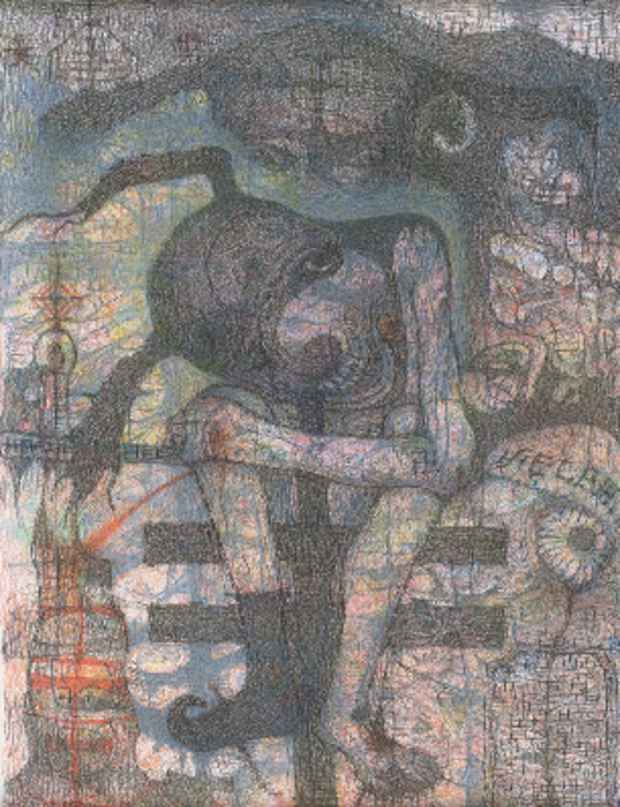M’onma “Lucid Dreaming”
Cavin-Morris Gallery

This event has ended.
Looking for a cohesive narrative in one of M’onma’s drawings is like telling someone about a dream and then realizing that you are losing and changing the thread of the experience as you tell it…The further in you get into the telling , the further you travel from the original way you remember it. It is a lot like a novel or short story by Japanese novelist , Haruki Murakami. One needs to move through the narrative without necessarily putting the pieces together. Add a healthy dose of Shinto and contemporary spiritual symbolisms , and you begin to get an inkling into the dream world of M’onma. Murakami must also allow himself to abandon concepts of rational sequence when he writes. In a way , this brings one back to Surrealist concepts of automatic writing and allowing dream to occupy equal ground with temporal realities.
M’onma doesn’t speak much about his process , but it would seem that letting go of his own intellectual control of his visual narrative is indeed a very important part of it. He says he has always drawn; he has always made some kind of art , but one day he sat to draw his usual subject: a still-life, when he felt an entity take over his hand while he was in a hypnogogic state. He didn’t fight it and didn’t return to his old way of making art. He did, however, feel it was a divine force. It was also a form of self-healing. He was living and recording those waking trancelike dreams.
As in dreams there are some things that repeat drawing to drawing: crosses, telephone poles and wires, grimacing clown-like beings and references to body parts. It is too easy in his drawings to reference anime while looking at his drawings , although they do share that suspension of disbelief, and the phenomenon of looking at something unreal depicted clearly. That comparison glosses the profundity of the work. M’onma is not classic Art Brut , but he is unreservedly visionary ; h e is not mainstream, he is not part of the canon of the art world, his style emerged as a part of an alternative process of art making that is closer to a séance than a dialogue with art history. His style is fully developed and mature. He worked for nearly forty years in solitary before agreeing to show his art to the world. This is his first one-person exhibition.
There are layer upon layer of atmospheres inked and drawn into these pictures. One get s so caught up in the figures it is easy to overlook the consummate skill of their executions - the smooth manipulation of process into a seamless whole. The black and white works are as intricate as the ones done in colored pencil. One cannot help but see after a while that various types of beings populate these enigmatic drawings. There are the ambivalent clown-like figures that float in the foreground yet who project no specific evil, there are the more benevolent Buddha or deity like figures, there are the half man, half animal figures , and there are humans who seem to be caught up in the dream machinations of the overall vision. He feels that he as a human is used to spread the word of an unknown civilization. There are no secrets. And he has an insatiable curiosity about the magic of a truth that unfolds.
These drawings are not necessarily meant to answer anything. They are too involved to be simple Zen koans. M’onma is unique, not only to Japan but internationally. He emerged fully formed and unexpectedly. Cavin-Morris is honored to share his work in Lucid Dreaming.
Media
Schedule
from January 09, 2014 to March 22, 2014